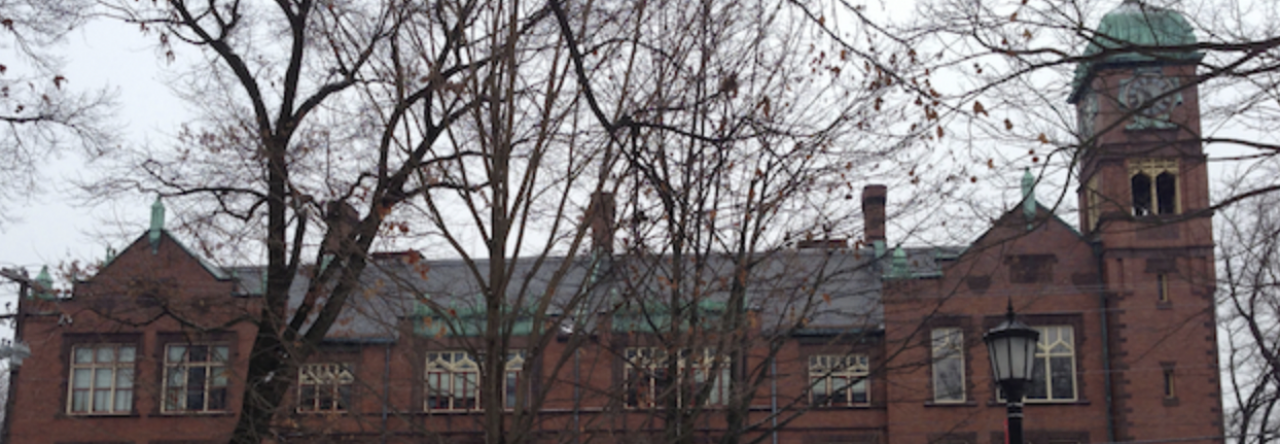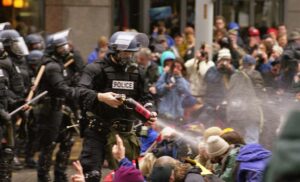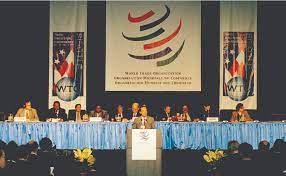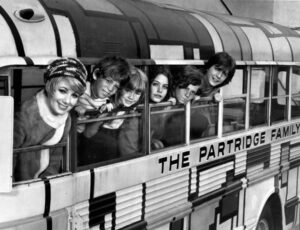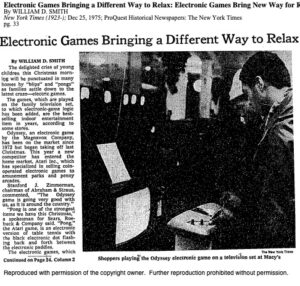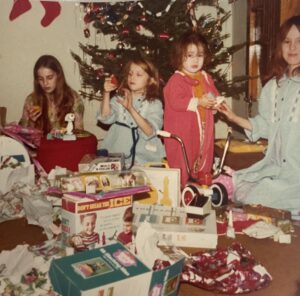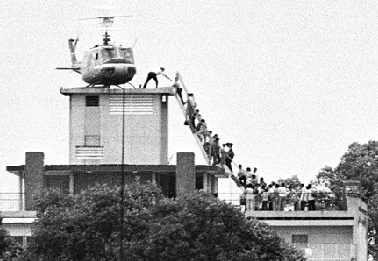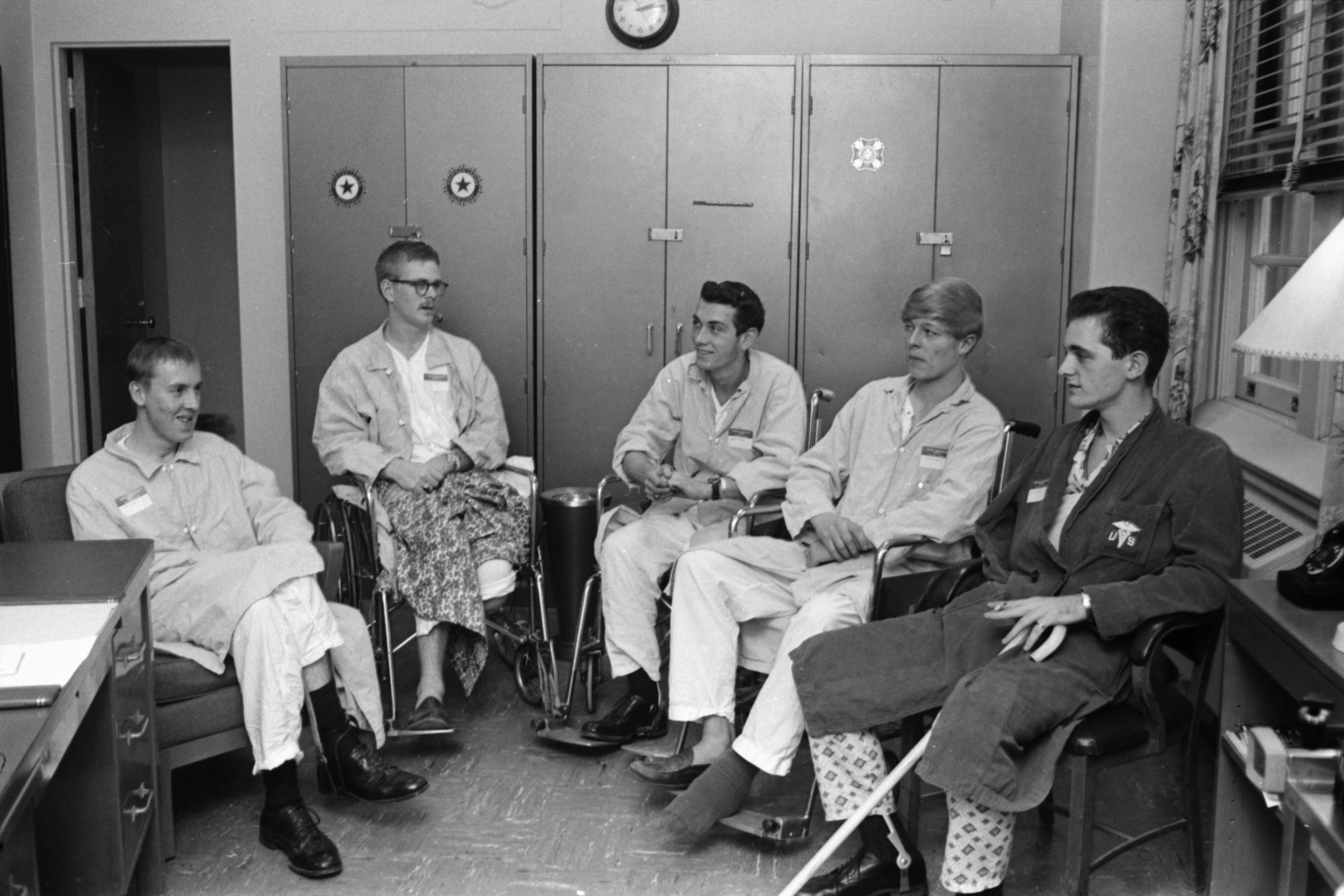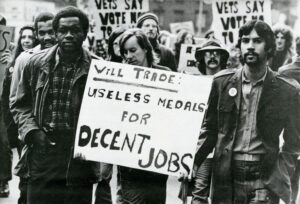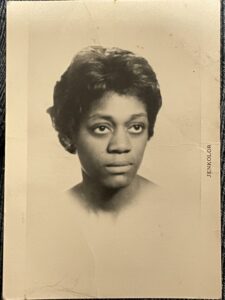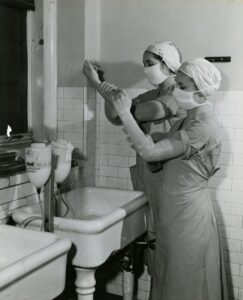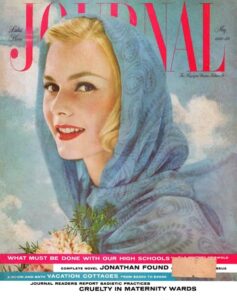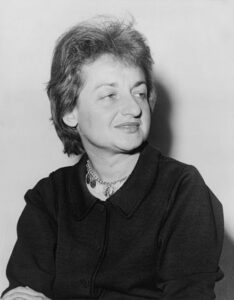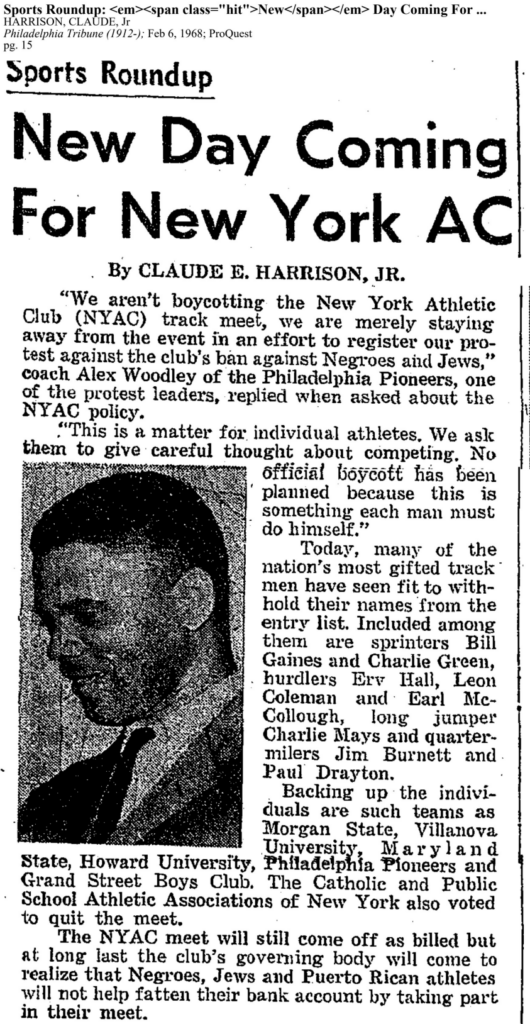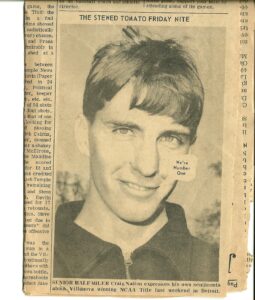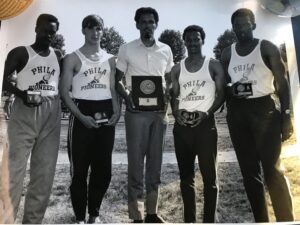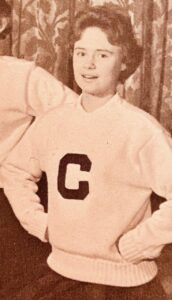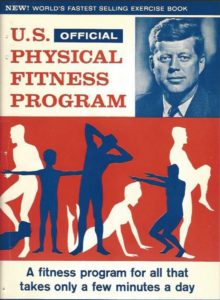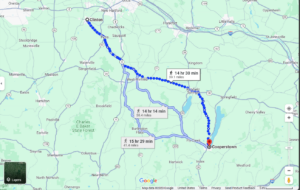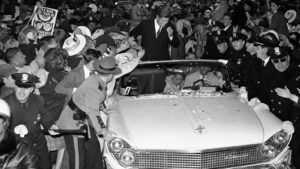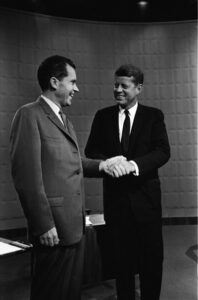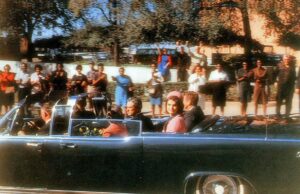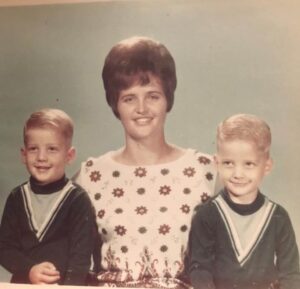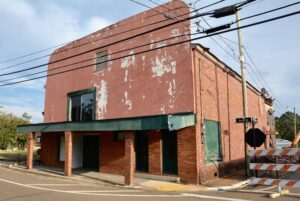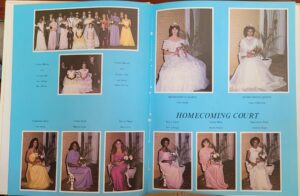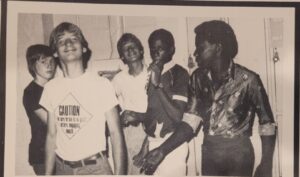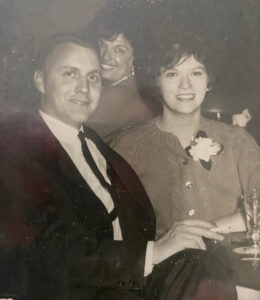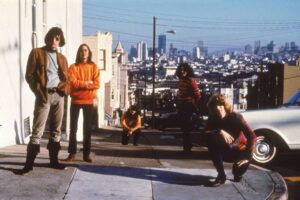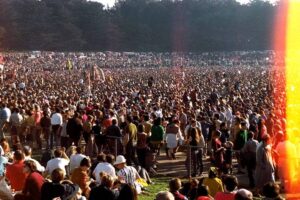Ignorance isn’t Bliss: an Interview with Annie Wymer on Her Experiences during the 1999 WTO Protests
By Michael Wymer
Annie Wymer was 30 years old and six months pregnant when she was caught in the chaos of the 1999 protests against a meeting of the World Trade Organization in Seattle. After crowding onto a bus, she borrowed someone’s phone to contact her husband. She recounts that she “told him what was going on, . . . there was no way he could come and get me”.[1] As the bus slowly worked its way through a crowd of protesters and police Annie recalls “pounding on the bus”, swearing “there was an armored car like a tank in the street”.[2] Desperate to get home and “scared spitless”, Annie rode north as the world’s media turned their eye to the violence happening in Seattle.[3] The World Trade Protest is highlighted in H.W. Brand’s American Dreams: The United States Since 1945 as an example of discontent at the ongoing trend of globalization in the 1990s voiced by residents of a liberal enclave in the United States.[4] Brands asserts that “a rapt world” had its eyes on Seattle, but he leaves out the experiences of the young professionals working in the areas affected by the protests like Annie Wymer, who were not aware of the ideologies clashing in their city till they were in the middle of them.
The World Trade Organization announced their plans to meet in Seattle well in advance of the planned kickoff at the end of November. The goal of the meeting was to host a new round of trade talks before the new millennium for its over 130 member nations. Trade representative Charlene Barshefky was quoted in the press release announcing the event as saying it would be “the largest trade event ever held in the United States”.[5] Protests were anticipated; a week before the conference, the Seattle Times reported that the talks would likely bring “50,000 people downtown”.[6] Demonstrations didn’t quite reach that number, but an estimated 40,000 people thronged the streets on November 30th to voice their opposition to perceived moral and environmental issues posed by globalism and the WTO.[7] By noon, several more militant factions of protesters proceeded to engage in violent behavior.[8] Protesters smashed store windows in the shopping district near the Washington State Conference and Trade center where the WTO was meeting, lit trash cans on fire and looted stores.[9] Those who engaged in vandalism made up a small fraction of the protesters, but the police responded by cracking down on the entire demonstration. By the end of the night the national guard had been called in and the crowds mostly were dispersed.[10] when a convention would be in town, it got busier”.[11] On her lunch break there were “a lot more people . . . more people wanting to mix things up”, but she returned to work on the upper floors of the Nordstrom building as usual.[12] When the manager for the building began asking people to leave because violence had broken out in the city, she “didn’t know what was going on . . . how bad it was”.[13] She describes exiting the building as “loud, and lots of people yelling” but
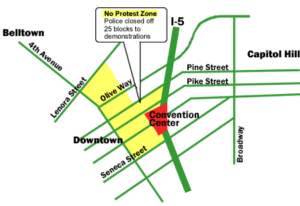
Annie Worked West of the Conference Center, within the Yellow Zone. University of Washington https://content.lib.washington.edu/wtoweb/index.html
she “couldn’t tell you what they said”.[14] As she wasn’t up to date on the news at the time, she couldn’t understand what was going on, asking herself “why are they doing this? . . . what would cause them to be so upset and to do this?”[15] After stumbling through the tear gas wafting through the streets and finding her way onto a bus, Annie was able to make it home safely.
Other than offering a harrowing story, Annie’s testimony points to a perspective not given in Brand’s section of the WTO protests in American Dreams. Brands neglects the uninformed and politically ambivalent perspectives, both in the events they experienced, and how they recall them. While she knew that WTO was visiting the city, she had no idea what the protesters wanted, even after seeing them firsthand, assuming that “they were protesting against . . . the world trade organization and . . . some of their policies and what they were trying to do, I think”.[16] One would think that from Brand’s assertion that “few single events in American history ever received more global coverage”, the whole city of Seattle would be fully informed on what was about to happen on its streets. The section wrongly paints the participants in the event in black and white, protesters, onlookers, and police, without interpreting the in-between. Because of this, he generalizes several aspects of the 1999 WTO protests in ways that contradict Annie Wymer’s recollection of the event. Some of these are larger omissions than others, but each fact omitted would have created a more accurate picture of the impact the protests had not just locally, but in national history.
Seattle, as Brand paints it, was a “haven for hippies and tree huggers”, a stereotype which is in many ways true.[17] As Annie recalls from her childhood in the area “in the seventies you’d have more of what my parents would call the ‘flower children’”.[18] With this counter-culture idea of the city in mind, it is not clear why it was selected to host such a historic establishment trade conference. If Brands were to give the city a full historical context these questions would disappear. The Seattle of 1999 was the home of exporting giants like Microsoft, Boeing, Costco, Starbucks, Alaska Airlines, and Nordstrom. As part of the boom in global trade, Annie was helping Nordstrom as they “shipped everything from overseas”, one of the things protesters would hound upon during their demonstrations. This shipping happened at the 6th and 10th busiest commercial ports in the country in Seattle and Tacoma respectively, and transportation from SeaTac international airport was paramount for conference logistics.[19] Conventions happen in Seattle frequently enough that it didn’t surprise Annie that the WTO was coming to town, even though she hadn’t bothered to learn what they were planning to do while there. For her, business conferences were exciting because they brought “more people globally to town which was always fun to see . . . a lot of times they’[d] come into Nordstrom”.[20] To Annie the event was nothing out of the usual until the protests erupted.
In neglecting the stories of people like Annie Wymer who do not stay up to date on the state of the country, Brands misleads the reader into assuming that every individual in history chooses a side. He selected the World Trade Organization protests to illustrate the growing backlash against globalization in the 1990s. But for Annie, that backlash was not in her mind at all as she went to work on that Tuesday. The legacy of the protests is misrepresented for the same reason. If there were some Seattleites not in on the debate over globalization and trade, surely, they would be after an event that Brands says had global attention. Annie’s testimony refutes this, today she doesn’t know exactly what the protesters were demanding.[21] During the chaos she even believed that the tear gas “was the protesters, throwing stuff at the police”. When asked about returning to work she states that the office quickly “moved on from it” and went on with their jobs.
When writing about an event, it is very easy to concentrate on the extremes of emotion. But in focusing on only the protesters and the police response in Seattle during the 1999 World Trade protests, H.W. Brands leaves out the fact that some people caught in the crossfire had no clue what was going on. Those people left in confusion illustrate an important fact about American History, that not everyone is appropriately informed about what they are living through. Most people don’t know they are living through history until years after the fact, and even then, they might not understand it. Brands’ claim that the WTO protests were universally understood as a conflict between anti-globalists from Seattle and outside officials is a mischaracterization of the event, and an omission of stories like that of Annie Wymer. With her oral testimony, key insights are now revealed about ordinary people during extraordinary events.
[1] Zoom Interview with Annie Wymer, November 30, 2023
[2] Zoom Interview with Annie Wymer, November 30, 2023
[3] Zoom Interview with Annie Wymer, November 30, 2023
[4] H.W. Brands, American Dreams: The United States Since 1945 (New York: Penguin Books, 2010)
[5] “World Trade Organization.” WTO. Accessed December 11, 2023.
[6] Stephen H. Dunphy, “WTO In Seattle – Trade Rebound Seen for 2000 as Asia Crisis Fades”, The Seattle Times (Seattle, Wa.) Nov. 23, 1999
[7] Brands, 336
[8] Brands, 336
[9] Editors, “Wild in the Streets”, The Seattle Stranger (Seattle, Wa.) Dec. 2, 1999.
[10] Marc, Edelman. “Peasant—Farmer Movements, Third World Peoples, and the Seattle Protests against the World Trade Organization, 1999.” Dialectical Anthropology 33, no. 2 (2009): 109–28. http://www.jstor.org/stable/29790875.
[11] Zoom Interview with Annie Wymer, December 5, 2023
[12] Zoom Interview with Annie Wymer, November 30, 2023
[13] Zoom Interview with Annie Wymer, November 30, 2023
[14] Zoom Interview with Annie Wymer, November 30, 2023
[15] Zoom Interview with Annie Wymer, November 30, 2023
[16] Zoom Interview with Annie Wymer, November 30, 2023
[17] Brands, 332
[18] Zoom Interview with Annie Wymer, November 30, 2023
[19] “Meaningful Consensus.” Economic and Political Weekly 34, no. 51 (1999): 3556–57. http://www.jstor.org/stable/4408723; Bayne, Nicholas. “Why Did Seattle Fail? Globalization and the Politics of Trade.” Government and Opposition 35, no. 2 (2000): 131–51. http://www.jstor.org/stable/44482886;
[20] Zoom Interview with Annie Wymer, December 5, 2023
[21] Zoom Interview with Annie Wymer, November 30, 2023
Further Reading:
Interviews:
11/30/2023
M – Thank you for talking with me, again just to give you an idea we’re going to be talking, doing an oral history about your experiences during the 1999 world trade organization protests in Seattle, to get a couple things away at the very beginning, my name is Michael Wymer, I’m recording this from Dickinson College in Carlisle Pennsylvania, could you tell me your name please?
A- Annie Wymer
M – And where are you currently?
A – I am currently in Mountlake Terrace Washington
M – And do I have your consent to Record this and . . .
A – Yes you do
M – Use it for my project? And you know that I’m going to be sending you some paperwork that will be more official.
A – Yep, no problem
M – Cool, I’ll say just at the start, that this is my Mother, so there’s a little bit of a bias there, but I will be asking you questions, some of them I do know the answer to, so if you tell me anything that seems like I should already know it it’s to get you talking and things like that
A – Okay
M – So I think my fist question is, so you were in Seattle in 1999, could you just talk about your, kind of a brief summary of your life up until that point when you were working in Seattle
A -So I worked for Nordstrom which is a clothing retailer, and I was married, and I was pregnant and we lived in Shoreline [City directly north of Seattle], and I commuted downtown by bus usually and worked there for Nordstrom on Fifth Avenue
M – And where did you grow up?
A- I grew up in Kirkland Washington, which is not too far from Seattle.
M – Alright, growing up what was your impression of Seattle?
A – Um, Growing up? That it was fun, somewhere to go, different, on the water, you had the space needle, um, the king dome back them, so it was a great place to grow up, and I like the weather [laughs]
M – I’ll get into some more questions about politics, so what was the first election that you saw? What was the first election that you can remember in Seattle?
A- Um… Probably Reagan times, can’t remember if Carter came after Reagan but, did Carter come before?
M – Carter came before Reagan
A -Okay so pry Carter just because of peanuts and his brother Billy and, but I remembered Carter and then Reagan, those would be the ones that I remembered, but I’m trying to think who would have been president when I could vote, I’ll have to think on that
M – Do you remember voting when you turned 18?
A – M’hm, would it have been Clinton? No…
M – It was probably, you were born in ’69?
A – Probably a Bush
M – Yeah it was probably H.W.
A – Yeah but no I remember voting when I was able to, it was a thing in school where you registered to vote, when you were in High School
M – Could you talk a little bit about Seattle as in Seattle politics? It’s very well known for Hippies in the sixties, were you aware of some of the differences between the Seattle area versus the rest of the country?
A – No probably well the only thing I would notice was that it was, you know, a little bit more free spirited [laughs] and hippy-ish, but we also went to eastern Washington which is more conservative if you were where my grandparents were in the Tri-Cities [Richland, Pasco, Kennewick], a little bit more conservative down there, a little more free spirited over in the Seattle area.
M – And when you say free spirited, what would make you think that?
6:54 A – Like Hippie the, I guess that would be in the seventies, you’d have the more, my parents would call the “flower children”, little hippies kind of just going with the flow, long hair, hippies.
M – In the 1990s you were working in Seattle, do you remember the Clinton years? What was the Clinton election for his first term like?
A – You know, I don’t really recall too much about it, but I wasn’t a big political person, but um just remembered him getting elected and them having a small child
M – We’re going to get into the late 90s, right, 1999, so this is where I am going to open it up to you, what would you say, did you know what the World Trade Organization was going to be doing in Seattle? Before it happened
A – Um… No, I knew it was coming, and that it was a big deal, and you know lots of people were going to be in town for it, didn’t really know what was going to happen, the turn it took, but it was more of kind of a little bit of an excitement for Seattle to host something like that.
M – So this is where I’ll open it up for the day of, and you can go in, I know it’s been a long time, but you just tell me the story, what did you do that morning? And did you know there was going to be a protest? And from there just tell me about what that day was like for you.
A – So, rode the bus to work, I lived in Shoreline I would have, actually your dad probably dropped me off at work and then, he worked down by the airport [SeaTac] and I went to work and at that time I was at the top of the Nordstrom Building, that’s where my offices were, and it was a normal day knowing that WTO was going on, and I just remember lots of people, like when we went to lunch, lots of people being around, and then the protesters came in, I did look it up last night and it looks like there was about 40,000 protesters that came in, something like that, and I remember maybe going out at lunch and it was a little hectic, there was a lot more people, not necessarily a positive thing, more people wanting to kind of mix things up and, it was getting, it was getting a little hectic down there, and then I was working and the, oh what would it be?, like the operations manager of the building, they started closing down stores, any of the shopping stores, anything, and they were asking people to get out of the city, because the protesters were starting to become a little more violent and take over and they were actually bringing in, I think they brought in later in the day the national guard, and for some reason I . . . well I’ll go with that one later. So they were asking everyone to go home as soon as possible so I gathered all my stuff, went down to the street, went to go to my bus stop, and there was just people everywhere, and they were actually throwing like canisters, and there was the police, and they had their riot gear on, and my bus was not going to come down that street and I really didn’t know what I was going to do, so I went down to a different place to catch a bus and my only thought was to catch whatever bus I could and I’d figure it out later, like just get out of the city and I’ll figure it out, now it’s 1999, I maybe had some kind of cell phone, but I didn’t have it with me, cause it wasn’t a common thing, and I went to go get on a bus, and the bus was completely full and they wouldn’t let you on, and so I didn’t know what to do, and I turned around and there was a shoe store, and there were people piling into the shoe store and they locked the doors and by this time now, they had the riot police out, they had the horse police are coming out, they’re throwing like tear gas cannisters, breaking windows, just knocking over garbage cans, and so I pounded on the door of this like footwear store, and they let me in with a bunch of other people, and so, I’m scared spitless, and then the bus actually then were pulling up and they would open their doors and the guy would unlock the door and we would run, we ran out and got on the bus, which I didn’t even know where it was going I just like, I’m just like on a bus I’ll figure it out, and get on the bus, and a guy had a cell phone, so I asked him if I could use it and so I called dad, and told him what was going on, and he had just started to hear about it, and there’s no way he could come get me or anything like that. He had to avoid the city, so I rode the bus, and they’re like pounding on the bus and busses are trying to just like get out of there, and I swear there was like an armored car like a tank on the street, and people everywhere, and so finally I got up, not, I don’t know how far from home, and that was where the bus went, and so luckily I was going down Aurora [Highway 99] got off and then I walked the rest of the way home, and then was watching everything on the news, so that was my adventure, and plus I was probably six months pregnant, five and a half – six months pregnant, to add to that [laughs] and they asked people then, I don’t know what day it was, do you know what day it was?
M – I can look that up
A – and then I did not go into work for the next few days, they did not want people coming into the city, cause they were trying to get all those people out and then yeah, I went back probably then next week, and they had a lot of cleaning up they did, there was broken windows, all sorts of stuff
M – It was a Tuesday
A – It was a Tuesday? So, I wanna say it started on Wednesday but the riot was Tuesday [sic] and it went downhill from there, so that was my adventure
M: Well, thank you for sharing I have a couple follow up questions, that’s not the whole thing. These are just questions to get you to think a little more about some of the aspects of the day. So, you mentioned how your operations manager was asking people to leave and explaining the situation, do you know, did you get a sense of where the information for the operations manager was coming down from?
A – I think he had, where I was there wasn’t like any windows, and so the store’s maybe three or four stories, and I think they were getting work from probably the Seattle police cause they were locking the doors and I don’t know if like a windows [sic] got broken there, I can’t remember, but they were just assessing and the police pry said we need to get, you need to get people out of here
M – So earlier in the day you had gone out for lunch, and you said there were people out, what kind of people were about? Did they seem like onlookers? Did they seem like people who were protesting? Did they have signs?
A – It seemed more like protesters there were probably signs, I can’t remember exactly, but they were more, there were protesters and then there was a bunch of people that were looking to make trouble, not necessarily protest, cause you can protest, but then there’s the people who want to make trouble and that’s, I think that’s when everything went bad is when those guys came in.
- – So when you came out the second time after work closed and things had gotten a lot worse, so the protesters can you kind of set the stage for me, was it like police on one side protesters on the other? Where was the force being targeted at?
A – So I had to go from the Nordstrom store and I had to cross Westlake, so anyone who knows the area you had to get across Westlake park and then there was a lot of yeah, it was protesters [gestures with one hand] and police [gestures with the other hand] but they were in their riot gear, with the shields, and then there were also horses, so they were kind of trying to push them back, get them out of, pry out of downtown area, or away from the stores, so it was kind of back and forth as I recall
M – So how were you getting information about this, was it just word of mouth? What was going on, how did you come to understand the situation if you did at all?
17:39 A – That’s a good question cause it was not like now, so it wasn’t instant, no, I remember you know being in my cubicle and then basically coming in and like hey we want everyone going home so we first heard of it cause again, there was no windows, you don’t, can’t see down and see what’s going on, and then really when I was trying to get on a bus to get out of there I didn’t know what was going on, like I didn’t know, like I said, I’m just gonna get on a bus and I’m gonna try to get as close to home as I can, and I’ll figure it out then, but there was not the technology, there’s not the phone I didn’t know if, how bad it was, are we even going to get out of there, how long, I mean the traffic was horrible, and it was just basically word of mouth because nobody would even have, it’s not like you would have your transistor radio or something like that so it would be just word of mouth or what people had heard or seen.
M – So dad was further south by the airport, when you finally got in contact with him, what did he think was going on?
A – I just wanted to let him know that what was going on downtown, and that I was on a bus and that I was trying to get the heck out of there, but it was chaotic and traffic and he’s like there’s no way he could come and get me and, cause you also don’t want to be involved in that and so he had only just started to hear about it, and again they weren’t really on computers you wouldn’t get an alert, anything, like that was all probably word of mouth or maybe somebody had like the news on in a break room and then you’d hear about it
M – do you remember what channels you were watching?
A – I would say, probably 5, King 5, probably 4 [Komo 4] or 5, but pry 5 I like 5 better [Laugh]
[End of first recording]
M – So I’m going to ask a little bit about the after of the event, so you said that you had a couple days off of work, what did you do with those days off?
A – I just hung out at home, wasn’t going down into the city [laughs], yeah just hung out at home, pry did chores, and then I think I did a few work things too, I worked a little bit, but it’s not like you had the options of nowadays to work from home, but kinda took it easy from my traumatic exit
M – Did you know anybody else who also had a similar experience to you? Did you talk with anybody else about what was going on?
A – I can’t remember but probably, I think we were all probably in that same boat and a lot of us took the bus trying to get out of there, everything like that.
M – And returning to work what was that like? What were you feeling when you were riding the bus in right after you were allowed to come back to work?
A – Why, I think, well I wasn’t scared or anything like that, but I think if anything, as I recall, there was still a presence of the national guard and everything, trying to clean up and just make sure everything stayed at bay once they cleared em out but I think it took some days for them to, took a while to get people out of there, I mean you know what happened, so
M – So when the protests started, what was your understanding of what the people were protesting?
A – I think they were protesting, probably against some, well obviously against the World Trade Organization and I think some of their policies? And what they were trying to do, I think they were, that’s what my understanding, and I didn’t look it up [laughs]
M – Would you say that on the day when it was happening, you had that same understanding? So try and think back, like you are leaving and you are seeing the protesters, what were you thinking that they were protesting? And it’s okay if you don’t know
A – I was just like why are they doing this? I mean what, what is making, I didn’t know, so it’s like what would cause them to be so upset and to do this?
M – So in the next couple months did you, did this become a point of conversation or did you move on from it pretty quickly?
A – Um… Moved on from it, but it was a, I mean obviously we’re talking about it now, it’s, we, it was more like oh man sorry that happened to you or that was scary, it’s like oh yeah I’m pregnant trying to get on a bus and they’re throwing cannisters with tear gas and doing all sorts of stuff and so I guess it’s part of history
M – Was it pretty apparent that it was that important at the time? Or did that feeling come later?
A – I think when I got home and saw it on T.V., you know, they were showing, at that time you’d have like a helicopter outside taking pictures of it and just the mass of people in the streets, so I think it was more afterwards cause then I was more in a safe situation to look at it.
M – So just a logistical question, could you go through again, if you can remember, so where your building was and kind of where these events were happening, just so, it doesn’t have to be specific.
A – Well my building, I think it was on fifth [Ave.] and Pike [St.] or Pike [St.] one of those, and it was happening maybe, maybe I’m up farther, but anyways Pike and Pine and then you have Westlake Center so you are heading West, and that’s where a lot of people were gathering, but you had to get across Westlake Center and then the busses were running the other side, so you’re kinda in the core retail area in Seattle, And then I think they were trying to mainly gather there at Westlake, cause I don’t know if the Convention Center is there if that’s where, actually I don’t know where they were meeting, if they were meeting like at the convention center or if they were at the Westin hotel, they might have been at the
M – I believe they were at the Convention Center
A – Okay, which makes sense, the Convention Center would have been to the East of where I was, so they were travelling probably east but definitely Westlake is a gathering spot.
M – So going back to the protesters, when things started turning violent, could you talk a little bit more, or just reiterate what were they doing? Were they chanting? How would you identify a protester? Was it based off of just what they were wearing? Was it just kinda the situation you were in?
A – The situation I was in and they were just, kind of their clothing, they were, lack of a better word, just looked like punks, and they were, and you could tell they were looking to be destructive, that’s just, yeah
M – And talk about the destruction, so did you see any of the destruction of property that was going on at this time?
A – I saw a window broken, they were taking like those big metal garbage cans, throwing them, that kind of, that kind of stuff, and then you had the riot people kind of pushing at them but they were definitely pushing back, and then they were throwing whatever they, throwing things at the police and the national guard.
M – Were you at all, what was your thought on the police response? Were you, had you seen anything like it before?
A – No
M – Were you surprised by it?
A – No I thought it was fine, and then especially when they bring in the horses and all that too, and like I said they had like a, it wasn’t a tank but it was like an armored car because they were block, that just came to me, they had like a streets, they were starting to block streets off to keep any cars out, anything like that, so I think the police response was adequate, fine.
M – Was it, was it a surprise? Had you ever seen that level of police response before?
A – No, Never, it was a surprise but it was a good surprise
M – We’ll move a little bit into the future, the 1999 protest, The Battle for Seattle as it is often called, is controversial because of the use of tear gas by the police, rubber bullets, and the militarization, did you ever hear anybody talking about that controversy?
A – No, cause if you ask my philosophy, if you’re gonna do that you deserve what you’re gonna get, so [laughs] but no I don’t recall at all
M – Have you talked to anybody, I know you talked to me and my sister about it, but have you talked to anyone else about it in the years since?
A – Oh it gets brought up every once in a while, just more of, WTO, and trying to get out of the city and do that kind of stuff, so I’d say, you know, maybe once a year.
M – And what’s usually the consensus of it?
A – Oh yeah I remember that, that was, you know, it was crazy so, and it, it’s just a short conversation, no one’s dwelling on it, anything like that, um, but, everyone has, who was downtown, has their own little story about it
M – So you were working in an office, and you talked about your, your kind of boss or manager who was kind of directing people to leave, can you remember at all what your coworkers, what their response to everything was like? Were people worried?
A – It was all kind of the same, it was just like what is going on, and just kind of how am I gonna get home and, so there was, I don’t want to say panic, but there was nervousness, and a little bit of what the heck’s going on, so everyone was kinda in the same boat, I know probably when we got back to work the following week everyone told their stories.
M – Did the events of 1999 change how you saw Seattle?
A – No, No not at all, there’s other events more current that would make me think different but nothing changed then with my opinions on the city.
M – Do you think that the events were at the time, so thinking back to the time kind of what people were talking about, were most people on the side of the World Trade and kind of the establishment as opposed to being on the side of the protesters? That you talked to
A – [Nods] Most everyone I know is on the side of the World Trade versus the protesters
M – Could you just kind of describe the circles you were in, were they kind of young professionals?
A – Yeah, young professionals probably friends being, I don’t know, between 27 and 37, you know, young professionals working, you know, in offices, kind of all similar backgrounds growing up, that kind of thing
M – I think I’ll end with asking you a little more about the substance of the protest, so what are your thoughts on, these are going to be broad questions its okay if you don’t have an opinion on them, at the time thinking back, you’re Annie Wymer, it’s 1999 what were your thoughts on world trade, in the 1990s American trade was the freest it had ever been ,we were doing deals with China with South American, south-east Asia, what were you feeling at the time if you had any opinions on it whatsoever?
A – The only thing I knew about is cause I worked for Nordstrom, and we were importing from overseas, you know I knew a little bit about that, just the importing, shipping of goods, flying in of goods, Dad, same thing he’s an international trading freight forwarder so he, we just knew of boats coming in with stuff on it, you could see the port you can see those boats coming in and out all the time so I didn’t have a lot of thoughts on it, I just knew that it was happening, and it was, from my perspective a good thing
M – Similar thing, so globalism, interconnectedness of the world, the idea that you can get a McDonalds hamburger in Paris and Madrid and Bangkok and all of those things, that kind of thing where culture was being globalized did you have any opinions on that, again it’s okay if you weren’t thinking about it, that’s also an important thing too.
A – I wasn’t thinking about it then, but I mean I have travelled and would see, you know, Mozart’s birthplace and a McDonalds next to it, but I refused to eat there, I just stayed within the culture, I think some of it’s good, not all of it’s good, but I didn’t really think about it, I think about it now, but not so much then.
M – And so for the 1990s one of the big elements of protest was the environment, obviously in the 1990s the environmental movement was very different than it is nowadays, what was, 1999 Annie Wymer then not Annie Wymer now, what did you think about people who were very concerned about the environment?
A – I think they had knowledge and that they knew what was going to happen, some of the extremists I thought were wacky, but you know you’d have someone who was always like, I guess recycling wasn’t a thing, but they were always reusing or repurposing, and I thought that that was good.
M – Did you partake in any of that yourself?
A – Some, but not to big extremes like, I’m trying to think, I mean back then we were starting to recycle and do all that I would try and do my part and do all I could there.
M – Do you have any final point you want to make or anything we didn’t get to touch on?
A – No, I would say back in those late 90s in Seattle, you’d go down there, you’d go down to the market, you’d walk around, you’d go shopping, it’s beautiful down there, there’s a lot to see, but it definitely has changed, so hopefully someday it will go back to that.
17:25 M – Do you draw a line between that change and the events of 1999?
A – No, No, I think it’s just how culture has evolved, so I think it can go back, not the same but I think it can go back for the better.
M – Thank you for talking with me.
A – No problem, happy to do it
12/5/23
M – These protests are often pointed to as the beginning of the rapid expansion of militarization of the police, so you said this was your first time seeing the police in riot gear in person?
A – Yes, nope, well here now I just thought of that cause I had been the month before in London, and we were at a soccer match and the London police came in with their horses and the police in their riot gear for the hooligans, but that wasn’t here in the U.S., otherwise that was the first time I saw anything like that
M – Was that surprising to you to see the sophistication of technology that they had?
A – No it didn’t surprise me, it was just more surprising that they had to use it
M – So going back to 1999, in the mind of Annie in 1999, if I was to ask you, you’re thirty years old, in politics what was the most important thing to you at the time? When you were voting what was top of your mind? If anything in politics?
A – I don’t know, just someone who, obviously they can say whatever they want, and people will believe them whether they are truthful or not, but hopefully someone who is truthful and gonna do good for the country and everyone in the country and not just a bunch of BS.
M – What would you have said that your position on globalism was, international trade treaties with other countries to increase trade and production oversees of goods that Americans then buy.
A – It, was a little bit, I only had a little bit of it because I worked for a company that, I did go to Hong Kong, I mean we shipped everything over from overseas, I was used to that, my husband your dad works in international trade, so it’s definitely something we’re aware of, I guess we’re aware of it but it’s not like how we’re aware of it now after COVID and the supply chain issues.
M – So you talked a little bit about some of the work you did at Nordstrom, what was your position at Nordstrom at the time?
5:08 A – At the time I was, I’m trying to think what it was called, I was like a production assistant for women’s active and Callaway Golf and men’s active, yes that’s where I was.
M – So when you went to Hong Kong, what were you doing there?
A – I went to Hong Kong, I was in a different position at that time but I went to Hong Kong and what we were doing was working with the companies that were making our clothing, so let’s say the blouse I have on, we would, we were like picking out the buttons and clarifying the quantities, the colors, they probably had mock ups of the exact garment that we looked at, but we would know what factories they were getting made at, cost, all of that kind of thing, and then also it kind of goes in with the shipping and the trade of it
M – So in your time at Nordstrom, what years did you work at Nordstrom?
A – I worked there from ’92 to ‘99
M – Did you notice an increase in an emphasis on international business at the time, so that’s like looking towards overseas factories, how the business did its dealings?
A – They might have, there were times where they would change country of origin due to different issues, but they definitely had the company that they would use that were respected and had good practices, so I didn’t notice too much change, if anything it would just be change because a company wasn’t doing something good.
M – Were you ever worried about your positions or your work going overseas at the time?
A – No, I was not, because that’s what my position was here, needed to be here, but I could see that with other, positions like the people who picked out the sizing of the garments and specced those all out, I could see that as something that should be done potentially overseas.
M – Back to November 30, 1999, so this is the day of the protest, we talked about the day of, can you remember anything about the week leading up to that day? So were there people about in the days leading up, I think we determined it was a Tuesday so I guess you would have been at work the day before.
A – I think it was just know that this whole thing was going to be happening and that it would be busy, you knew when a convention would be in town, it kind of got busier, so I would speculate that it was just busier, more hubbub, more people globally, internationally in town, which was always fun to see, a lot of times they’ll come into Nordstrom to see everything.
M – You said that you had come to work and there were people milling about, and then you got out for lunch and there were more people about, so when you say people about, was this on the sidewalk, were there people blocking traffic in the street? What was the scene like during lunch?
A – it was just more people, on the sidewalks, and in shops, you know they were a little busier, the main place, there’s a, well they call it Westlake Park, which is bigger than a sidewalk, not necessarily, it’s a cement park if you will, but there were more people gathering around in there, so just a lot busier than a normal Tuesday.
M – So you get back from lunch, you get back to your desk from lunch and you said that your buildings operations manager type person came around to give you the news, had you met this person before?
A – Yes, yeah, they were quite known as like a facilities person, operational facilities director.
M – What was there attitude like?
A – Go home, now
M – Did they seem concerned
A – Yeah it was like, I want everyone out and now
M – So you are leaving your desk, you said you packed up your things, to get out of the building did you have to go through the store?
A – I had to go down an elevator, cause you couldn’t take, you could probably take the stairs all the way, I think I was on the eighth or ninth floor, you had to take an elevator, and then you went out some side doors, if you went through the store you had to go back through security to get out so there was like a security place, so I probably just went out the employee entrance.
M – So you come down and you’re coming out of the exit, when was the first moment where you realized something big was happening? Was it when the doors opened?
A – Pretty much, pretty much, there was, it’s not an alley it’s still on the street but its between where pacific place is and Nordstrom, where the sky walk, and there were lots of people in a hurry moving, so, but then when I got to, and I think that I got to my bus stop and there was police and protesters and national guard people, so then I couldn’t get my bus where I wanted to go so had to go, I think they were coming from the north to the south on that street and so that was me just trying to get to another bus stop.
M – What do you remember hearing?
A – it was loud, and lots of people yelling, but I couldn’t tell you what they said, just that people yelling, and, that’s kind of all I can remember, it was just loud, so kind of chaotic, just people, not like pandemonium but like definitely chaos of unknown
M – So you had mentioned that there were canisters being thrown of tear gas, at that time who did you think was throwing the tear gas?
A – I thought it was the protesters, throwing stuff at the police but it could very easily have been the police throwing it and them throwing it back.
M – So you went to your first bus stop, did you have to go through the park? Where was your bus stop when you would leave from work, normal bus stop?
A – My bus stop, that must have been, like maybe it was like fourth and fifth, I usually caught it right in front of where the Bon was [The Bon Marche] or Macy’s now, and McDonalds, otherwise known as Burgers and Bullets [Laughs], and the Westin, which is north of there, is where I think they were all coming from, but I normally caught my bus there, but it wasn’t at the normal time, so I had to go south on that street, and that’s where I ended up catching a bus, probably Fourth and Pine maybe, I can’t remember which one’s first Pike or Pine, but down there.
M – So you got to kind of a second bus location ,you got into the shoe store, and then they let you out, you got on the bus, and then you were heading out, can you tell me about, the doors open you get on the bus, what was the ride out like immediately?
A – A lot of people relief that they got on a bus, but kind of, it was packed, and we were going down Fourth or Fifth, and it would have just headed down and then got on Aurora, but it was more, there were people everywhere so the bus driver is just trying to drive, he’s not gonna let anyone else on, and you know, there’s people in the street, there’s chaos, so just getting past that central hub area of what was going on, then I think once we got on Aurora then it was a little bit more of a, if you will a relief, because we were out of that situation.
M – You had mentioned that there was some banging on the bus, could you tell me a little bit more about that?
A – Sure, you know people just banging on it, and those were just the people who were protesting, just to be, there was, they were throwing stuff and the bus is trying to get through them, so they’re just banging on the bus, probably trying to scare the people in the bus.
M – How long do you think from when you were dismissed from work to when you got home, do you think that took?
A – Oh I bet you it took probably at least an hour and a half
M – And could you give an idea of how long that ride would usually be?
A – Usually, actually it was probably longer than that, usually it would have been pry half hour or so, 45 minutes max with traffic.
M – Have you ever met anyone who was protesting?
A – Not in WTO, yeah I don’t know anyone who would have been in WTO who would have been doing that.
[End of interview]
